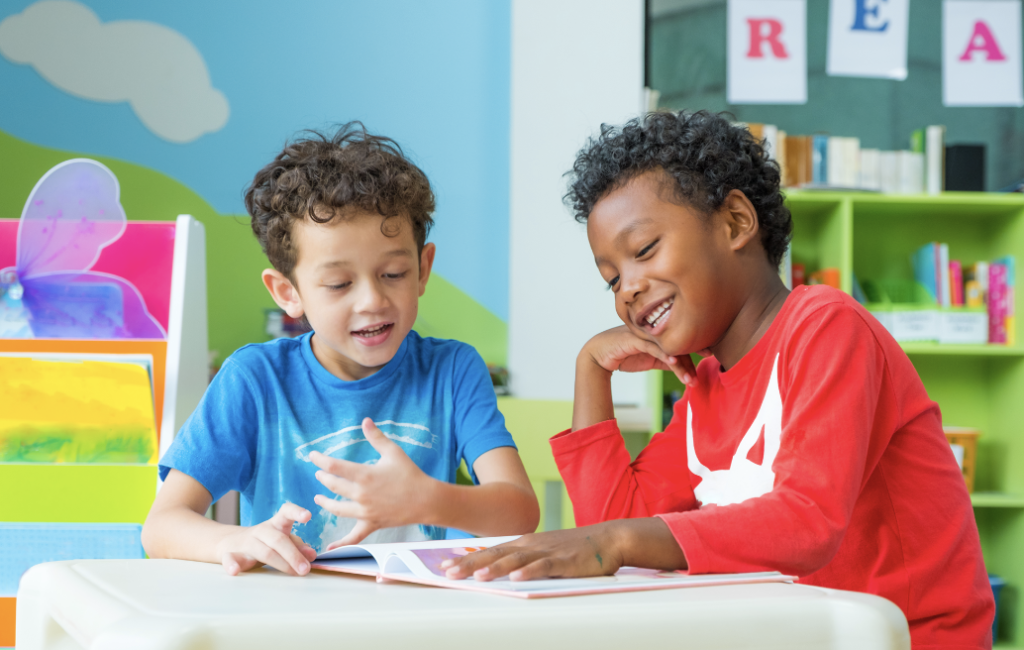

It has been hypothesized that successful bilingual education rests on three pillars (Krashen, 1996):
- Pillar 1: Helping children learn to read in their first language. It is easier to learn to read in a language you understand, and this competence facilitates learning to read in the second language. For example, Dow, Krashen, and Tinajero (2009, 2010) reported that better reading in the first language (Spanish) in second grade was clearly related (r=.52) to better reading in the second language (English) in sixth grade. In other words, literacy transfers. One reason for this is that reading results in knowledge, and the knowledge readers obtain through reading in their first language can make reading in the second language more comprehensible.
- Pillar 2: Teaching subject matter in the primary (first) language. Those with better knowledge of subject matter, e.g., math, will do better when it is subsequently taught in the second language. They will understand more, learn more math, and consequently also improve in the second language.
- Pillar 3: Comprehensible input in English, typically done through classes in English as a second language. Programs that provide these three pillars work very well; in fact, they result in more competence in English than all-English immersion programs (McField and McField, 2014). How do we explain cases of successful acquisition of English without bilingual education? At least some of them had de facto bilingual education: the pillars were provided and strengthened but in ways not typically done in school programs. The following case is an example.
Ramon
Ramon (described in Henkin and Krashen, 2015) arrived in the US when he was 14 years old. He had reached only sixth grade in Mexico, but was placed in ninth grade in the US because of his age. His school in the US did not offer bilingual education, only extra help (“accommodation”) in subject-matter classes taught in English. But Ramon made excellent progress, doing well in his classes and nearly reaching the reclassification level at the end of his second year in the US. I propose that this was because Ramon had de facto bilingual education, and the “de facto” element was light literature.
Ramon acquired basic Spanish literacy in Mexico in grades 1–6. He also acquired important but unusual subject-matter knowledge that made input in English more comprehensible though what may be considered a “light” source: television.
While growing up in Mexico, Ramon was a regular viewer of a TV show about a teenage ninja, Naruto, presented in Spanish. Halfway through his first year in the US, Ramon discovered that Naruto comic books (manga) were available in his school library. He became a dedicated reader of Naruto comics in English (Pillar 3). Thanks to watching Naruto on TV in Mexico in Spanish, he was very familiar with the character and his history, which made the comics more comprehensible and of course more interesting. Naruto TV programs functioned as Pillar 2, giving him information that made English input more comprehensible. After exhausting the school library’s supply, he went to the public library to get more Naruto comic books.
As time went on, Ramon expanded his reading selections as his English improved, a case of comic book reading leading to more reading in general (see Ujiie and Krashen, 1996). Henkin and Krashen tell us that Ramon began reading the Rick Riordan Olympians series, starting with The Lightning Thief. He learned a great deal of subject matter through this self-selected reading, as well as acquiring more English. His reading habit in English helped his acquisition of English and increased his knowledge of a variety of topics.
The Wikipedia entry on Naruto informs us that Naruto books “make use of cultural references from Japanese mythology and Confucianism.”
Also, Riordan’s Olympians series involves main characters who are homeless, have ADHD, are LGBT, and are deaf and visually impaired.
Thus, Ramon’s reading provided him with Pillar 3, comprehensible input via reading, resulting in greater English language competence—as well as knowledge of a variety of topics, including mythology, and a deeper understanding of those with special needs, knowledge that may not be of immediate use in specific classes but certainly contributed to his knowledge of the world.
Light literature was of enormous help to Ramon: Mexican TV gave him the interest to read Naruto in English and the background knowledge that helped him understand the stories. This this led to additional self-selected reading, more English, and more learning of various kinds. Ramon did not have formal bilingual education, but light literature gave him the benefits that the three pillars provide for bilingual education. In fact, thanks to light literature (TV and comic books), Ramon did extraordinarily well.
Conjecture
Ramon’s success in classes and in English language development strongly suggests that the kind of de facto bilingual education he experienced was unusually effective. I suspect that Naruto made the difference, reading that was not only comprehensible (thanks to his previous TV watching in Spanish) but also very interesting, far more interesting than what is found in the typical ESL or English classes. And it also made it possible for him to continue reading for pleasure in English and to continue to gain in language and subject-matter knowledge.
It appears to be the case that self-selected “light” reading not only supplements what students get in “regular” classes but may also lead to deeper and more lasting learning.
- Pillar 1: Reading in the first language—in Mexico, in school, grades 1–6.
- Pillar 2: Subject matter in the first language—knowledge provided by the Naruto TV program, in Mexico.
- Pillar 3: Comprehensible input in English—reading Naruto in English and eventually other books.
Sources:
Dow, P., Krashen, S., and Tinajero, J. (2009/2020). “Early (Grade 2) Reading Ability in the First Language Correlates with Subsequent (Grade 6) Reading Ability in the Second Language: A longitudinal confirmation of the interdependence hypothesis.” International Journal of Foreign Language Teaching, 5(2), 2–3.
Henkin, V., and Krashen, S. (2015). “The Home Run Book Experience.” Language Magazine, 15(1), 32–35.
Krashen, S. (1996). Under Attack: The Case against Bilingual Education. Culver City: Language Education Associates. www.sdkrashen.com/content/books/under_attack.pdf
McField, G., and McField, D. (2014). “The Consistent Outcome of Bilingual Education Programs: A meta-analysis of meta-analyses.” In G. McField (Ed.), The Miseducation of English Learners (pp. 267–297). Charlotte: Information Age Publishing.
Ujiie, J., and Krashen, S. (1996). “Comic Book Reading, Reading Enjoyment, and Pleasure Reading among Middle Class and Chapter I Middle School Students.” Reading Improvement, 33(1), 51–54.
Stephen Krashen is professor emeritus Rossier School of Education, University of Southern California.





